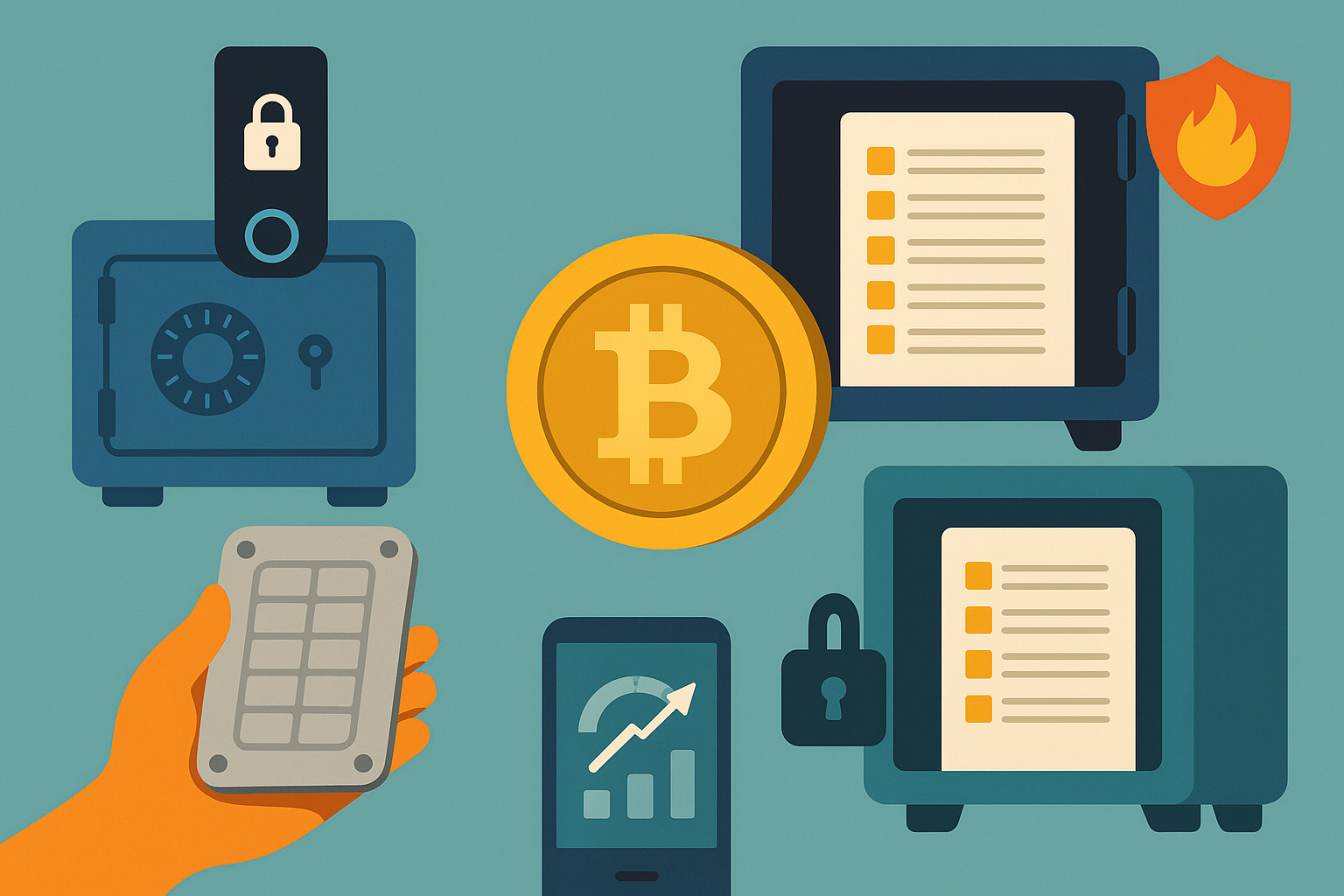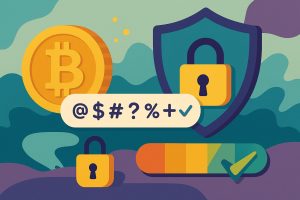Why a Recovery Phrase Deserves Serious Attention
A recovery phrase is the master key to your bitcoin wallet. If lost, stolen, or exposed, it can mean permanent loss of access to your funds. Unlike traditional banking, there’s no customer support to call for password resets. The responsibility—and the risk—rests entirely with the holder.
Because of this, how and where the recovery phrase is stored matters as much as owning bitcoin itself. Many people understand the basics of cryptocurrency but overlook the physical security aspect. That small slip of paper or steel plate can carry life-changing value.
Taking the time to think about safe storage isn’t paranoia. It’s peace of mind. Whether someone holds a small amount or a sizable investment, knowing that access is protected offers lasting confidence and stability.
Paper Storage and Why It Still Works
One of the most common ways to store a recovery phrase is writing it down on paper. It’s simple, offline, and immune to hacks. Many wallets even suggest this during setup, encouraging users to keep a written backup in a secure location.
However, paper has vulnerabilities. It’s fragile, flammable, and prone to water damage. If someone misplaces it or forgets where it was stored, retrieval can be difficult. That’s why choosing the right environment—like a safe or locked drawer—is key.
Some people go a step further by laminating the paper or placing it inside a waterproof bag. These small actions add a layer of protection without needing advanced tools or software. Simplicity often beats complexity when it comes to long-term reliability.
Steel Backups and Fireproof Options
For those looking for something more durable than paper, metal backups offer a strong alternative. These are steel plates or capsules that allow users to engrave or punch their recovery phrase into a material resistant to fire, water, and corrosion.
The appeal of steel backups lies in their resilience. If a home experiences a flood or fire, a paper note would likely be destroyed—but a steel plate could survive. This makes them ideal for users storing large amounts of bitcoin or planning for decades ahead.
Companies that make these products often include templates or tools to help users create backups without needing special equipment. Although more expensive than paper, the added security makes them a smart investment for serious holders.
Splitting the Phrase for Better Security
Some users choose to break their recovery phrase into parts and store each part in a different place. This approach can lower the risk of a single point of failure. If one piece is found or lost, it may not be enough to access the wallet.
For example, someone might write down the first 12 words on one card and the remaining words on another. Each could be stored in a different secure location. This method adds complexity, but it also reduces the risk of a total breach.
That said, splitting should be done carefully. Losing access to any one segment means the phrase becomes incomplete. Without redundancy or a clear system, the safety net can quickly turn into a trap.
Digital Storage and the Risk of Convenience
While it’s tempting to store a recovery phrase digitally—like on a phone, cloud service, or email—this comes with serious risks. Digital records can be hacked, stolen, or deleted. If a phone is lost or an account is compromised, the phrase could fall into the wrong hands.
Some people try encrypting their recovery phrase before storing it digitally. This adds a layer of protection, but it requires knowing how encryption works and managing keys separately. Even with safeguards, the risks usually outweigh the benefits.
Ultimately, digital storage is best avoided unless someone has a deep understanding of cybersecurity. The convenience it offers often invites exposure, especially if used casually or without additional protection measures.
Using Safety Deposit Boxes for Physical Storage
Safety deposit boxes at banks offer another offline method for storing recovery phrases. They provide climate control, fire protection, and controlled access. For people who prefer using institutions they trust, this can be a reliable option.
Placing a paper or metal copy in a bank vault separates the recovery phrase from the home environment, which can be beneficial during natural disasters or theft. It also reduces the likelihood of accidental loss or damage.
Of course, access to the box depends on the bank’s hours and procedures. In an emergency, getting to the phrase might be delayed. It’s worth weighing this delay against the added protection when choosing a location.
Home Safes and Their Limitations
Storing a recovery phrase at home in a safe can strike a good balance between security and access. Fireproof and waterproof safes provide physical protection while keeping the phrase close at hand. This method suits those who value control over third-party reliance.
However, not all safes are created equal. Cheap models may be vulnerable to break-ins or environmental damage. Investing in a high-quality safe that meets fire resistance standards is key to making this method worthwhile.
There’s also the issue of secrecy. If a safe is too obvious, it may become a target during a burglary. That’s why some users hide safes behind walls or disguise them among household items to reduce visibility.
Trusted Friends and Family as Backup Holders
Involving a trusted person can offer extra security—especially for inheritance or recovery in case of emergency. Some people give a copy of their recovery phrase to a relative, lawyer, or close friend. Others share access instructions under certain conditions.
This strategy depends entirely on trust. Once the phrase is shared, the risk of it being misused increases. That’s why it’s vital to choose someone with both integrity and understanding of its value.
Some people create sealed envelopes and ask the trusted party not to open it unless needed. Legal documents like wills can include instructions without revealing sensitive data outright. These hybrid strategies allow for both safety and access planning.
Creating a System That Survives Over Time
No matter how secure a storage method may be today, it also needs to hold up years from now. A recovery phrase stored in 2024 might not be needed until 2044. That means thinking long-term—from materials used to instructions for access.
Labeling without revealing can help. For instance, a folder marked with a generic term stored in a specific place may make sense to you but not to an intruder. Avoiding names like “Bitcoin Backup” on folders can reduce attention and risk.
Planning for the future means considering memory loss, changes in storage environments, and evolving threats. That’s why redundancy helps. A second copy stored elsewhere, or instructions handed down in a will, can offer extra protection as time passes.
Clear Steps Lead to Lasting Confidence
Storing a bitcoin recovery phrase is more than just a task—it’s a responsibility. Whether using steel plates, safety boxes, home safes, or trusted people, the key is planning with care. Small decisions now can make a big difference later.
There’s no single method that works for everyone. What matters most is creating a system that fits your life, balances safety with access, and remains durable over time. With a little thought and effort, long-term peace of mind is fully within reach.
















No Responses